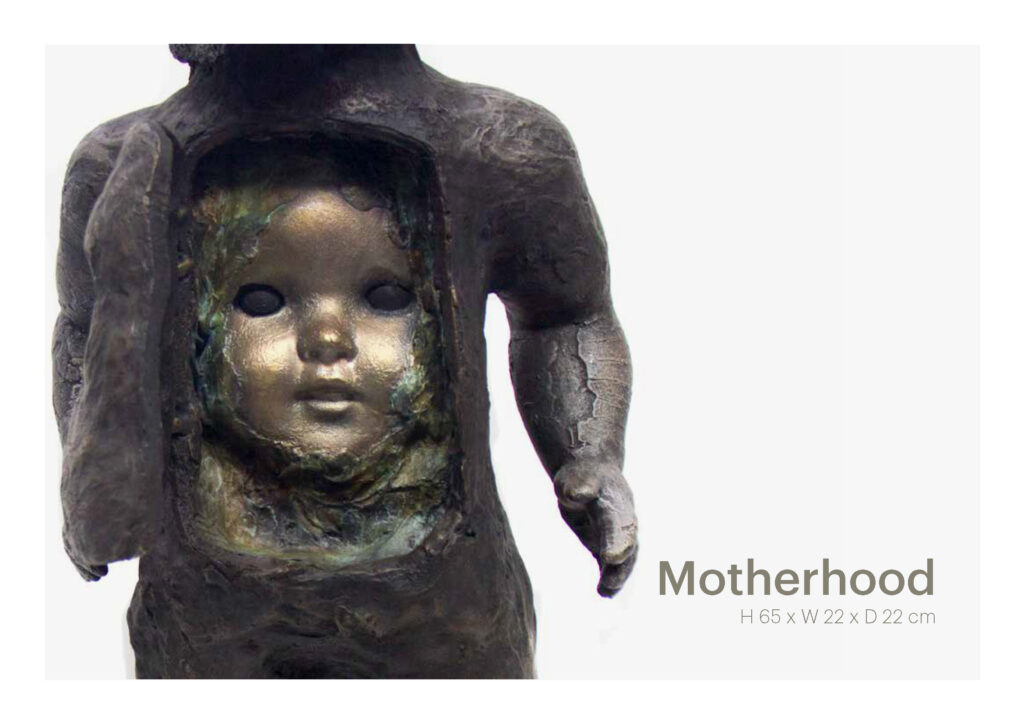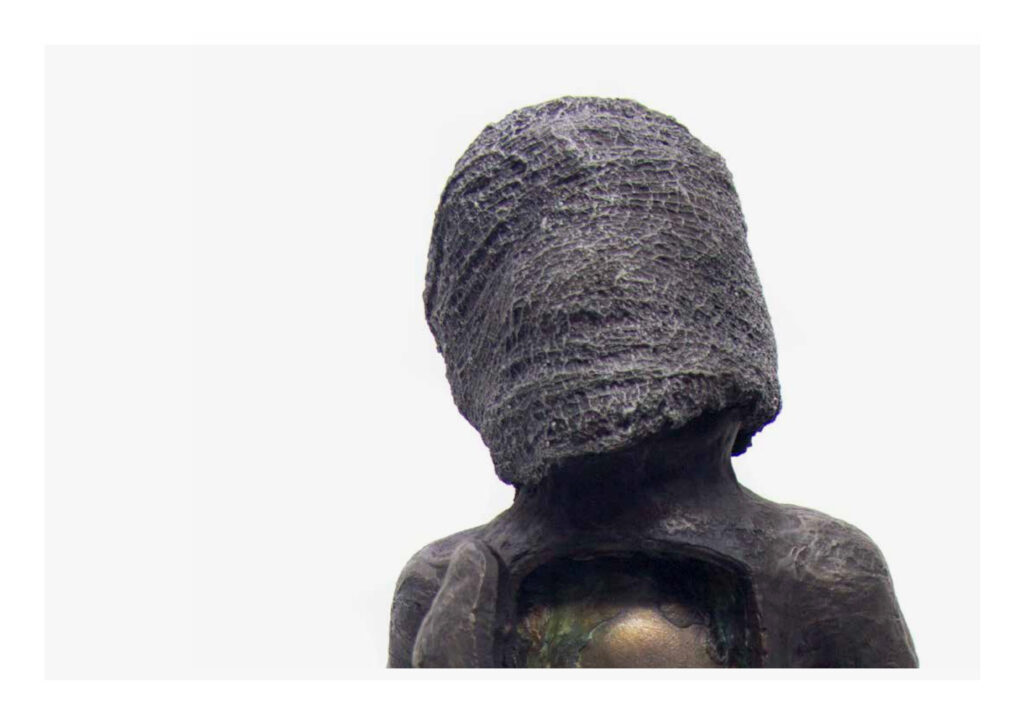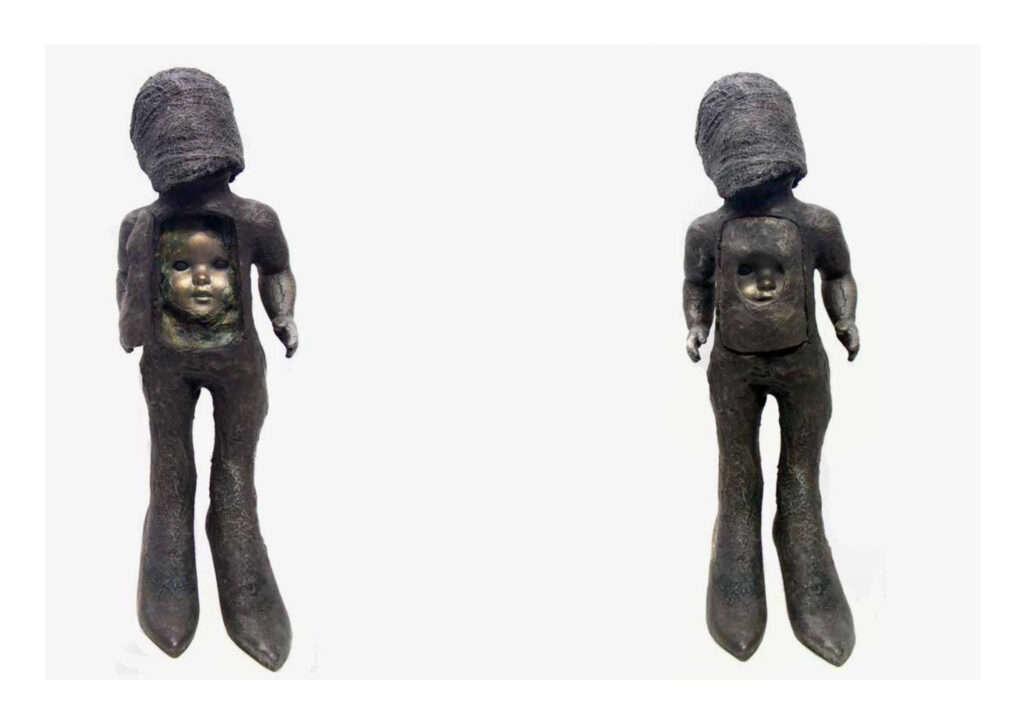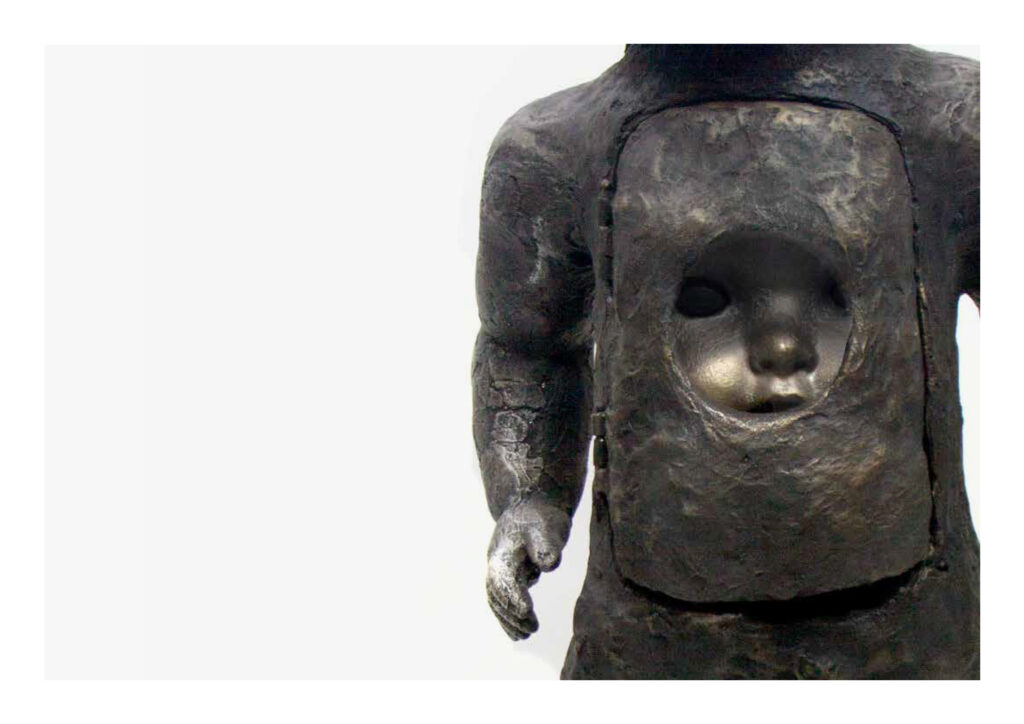Listen to Curatorial Text • Read Curatorial Text
Music: Dialogues on Stabat Mater




An unsettling vision of maternity is revealed in Auerbach’s “Motherhood”, a multilayered blend of form and allegory. More a disquieting manifestation of cultural constraints and expectations placed on women than an ode to natural birth, the piece resonates with social, cultural, and gender issues.
The female figure, with its doll-like features, is a stark commentary on the societal objectification of women. The face, obscured by hospital gauze, alludes to the medicalisation of childbirth, the shadowing of personal identity, and the erasure of the woman’s individuality. The gauze becomes a veil, concealing and suppressing the true self, transforming the unique human being into a role defined by society. Personal identity is supplanted by the archetypal mother role, laden with cultural meanings and burdens.
The sculpture’s startling feature, a hinged door on its torso, reveals a child’s face patinated in gold and encircled by verdant greens, confronting viewers with the dichotomy between the natural nurture of motherhood and its commodification. Auerbach’s choice to frame the child’s face may be interpreted as a comment on society’s fixation on the ‘product’ of motherhood rather than the process itself.
Adding complexity is the inclusion of oversized high-heeled shoes. Their exaggerated size speaks to the overwhelming societal roles women are often compelled to fulfil, constructing an unattainable ideal. These elements remind us that expectations surrounding femininity and motherhood frequently exceed what is reachable and authentic, mirroring inherent imbalances and struggles.
Auerbach’s composition serves as both reflection and critique, capturing complex intersections of identity, gender, and societal norms. The sculpture is an impactful contribution to dialogues about women’s roles, reflecting an evolution in understanding these themes.